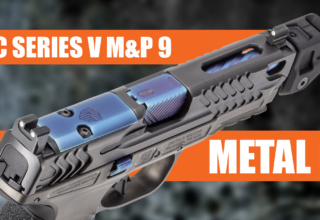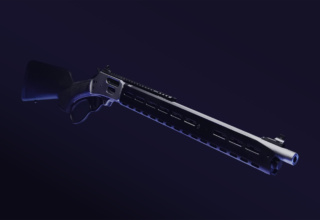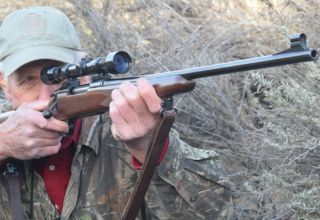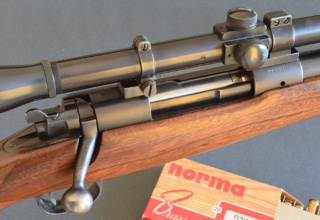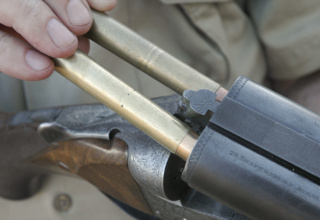Billy the Kid liked his Colt, but S&W’s Magnum upstaged it. Then striker-fired madness struck….
by Wayne van Zwoll
When black powder sent patched balls, frontiersmen on the Ohio and the Cumberland saved lead by using small-bore rifles. On the plains, grizzlies and bison shrugged off their sting; Hawken rifles drove big bullets. But handguns had lighter duty.
In 1836, Sam Colt established his Patent Arms Manufacturing Company in Paterson, New Jersey on a .34-caliber revolver. A .36 follow-up became the Texas Paterson after Ranger Jack Hayes and his troops used it to swat a swarm of hostile Comanches. Revolvers begged modest bullet diameters, so six loads could be housed in cylinders of practical size. At do-or-die distance, capacity and rate of fire trumped power.
In 1854, New York financier Courtlandt Palmer bought Walter Hunt’s Volitional ring-lever rifle and formed a gun company with Horace Smith and Daniel Wesson. They fashioned Volcanic pistols in .41- and .31-caliber. Despite claims that “30 charges can be loaded and discharged in 50 seconds,” these guns failed at market. Sold to Oliver F. Winchester, Volcanic Repeating Arms would focus on rifles.
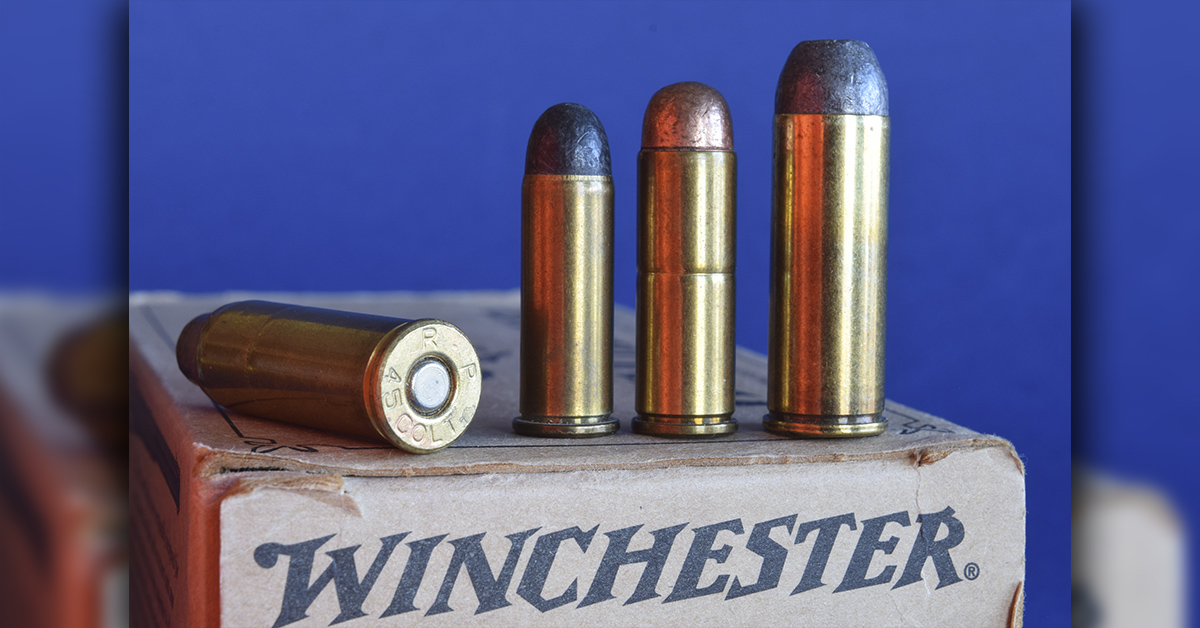
Colt’s Paterson plant was shuttered by recession after the Panic of 1837. Five years later, though, Texas Ranger Samuel Walker urged Colt to design a big cavalry revolver. Result: a 4 ½-pound .44 built briefly at Ely Whitney’s factory. Captain Walker fell to a Mexican lance soon thereafter at the Battle of Juamantla. The Dragoon was a smaller, refined Walker. The 1851 .36 Navy served James Butler Hickok, who packed a pair — as did the first Pony Express riders. But the 86-grain bullets driven by 25 grains of black powder had little utility beyond street brawls.
The 1873 Single Action Army is perhaps Colt’s best-known revolver, notable in its day for firing metallic cartridges. The U.S. Army adopted it in the powerful .45 Long Colt. So did lawmen and miscreants. The SAA would be bored for less celebrated rounds, too, including the .41 Long Colt.
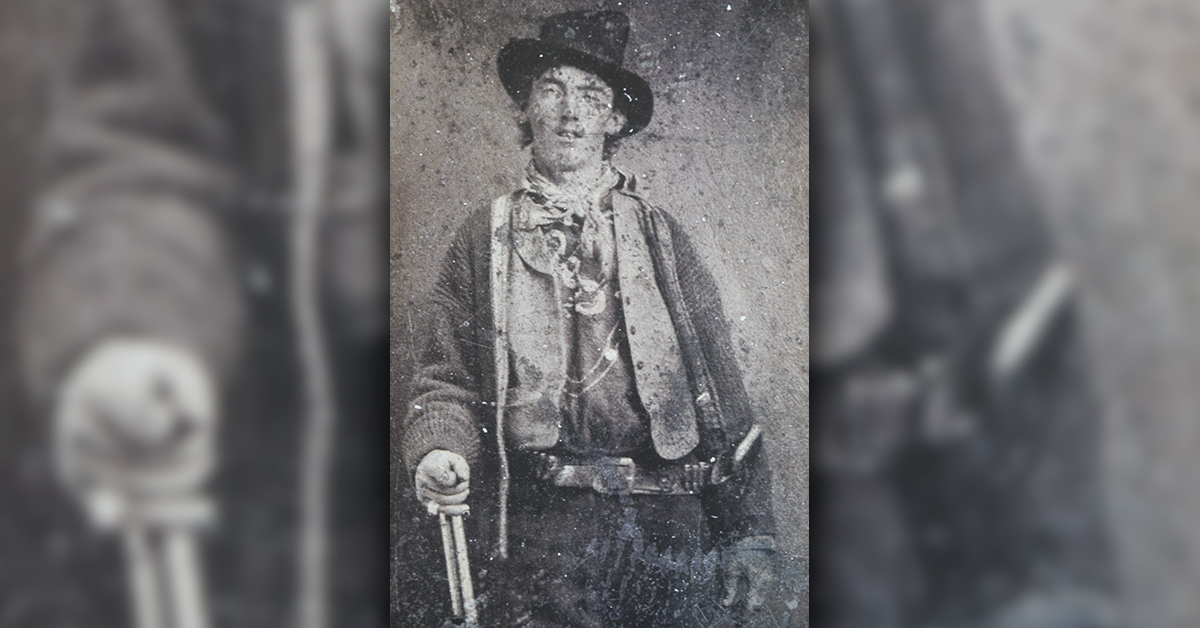
This .41 appeared first in Colt’s double-action Model 1877, a successful DA despite a famously troublesome mechanism. It came in .32 Colt, .38 Long Colt, and .41 Long Colt. Colt distributor Benjamin Kittredge attached the tags “Rainmaker,” “Lightning,” and “Thunderer.” (He’s also credited with dubbing the SAA, “Peacemaker.”) Billy the Kid and John Wesley Hardin, among other gunslingers, carried 1877s.
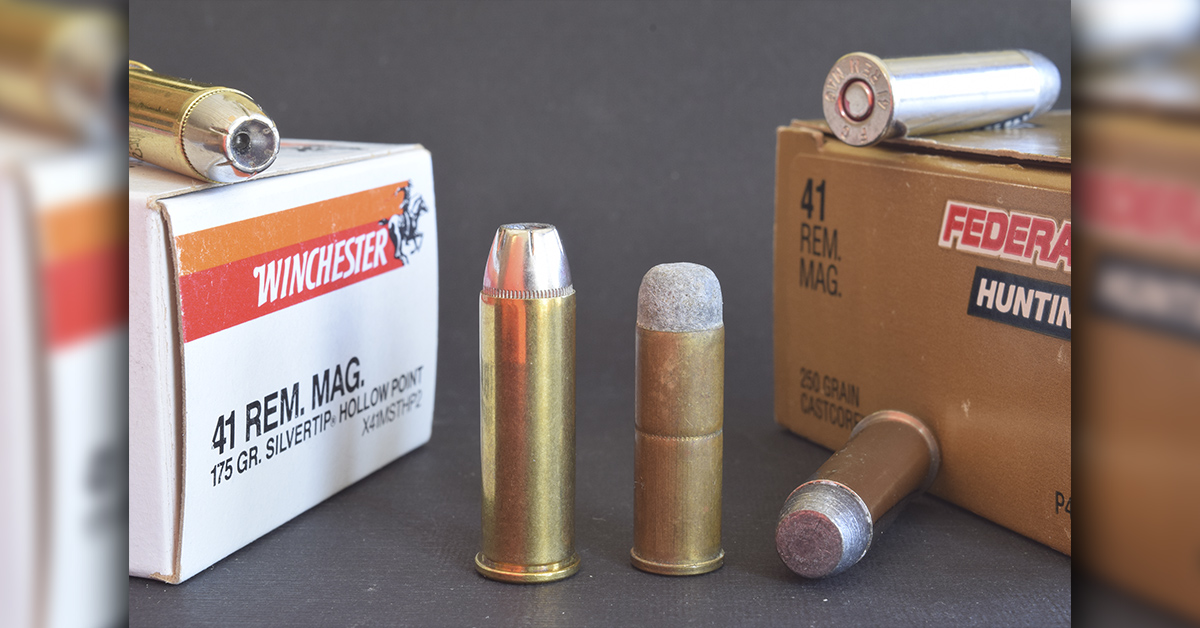
The .41, with a 200-grain bullet at 730 fps, registered 231 ft-lbs at the muzzle — about 60 percent as much energy as a .45’s. But it handily beat the .38, with its 150-grain bullet at 770 fps, toting 195 ft-lbs. The .41 used an outside-lubricated bullet .410 in diameter. Later loads had hollow-base, inside-lubed .387 bullets.
A Magnum Alternative
The only close kin to the .41 Long Colt, with its 1.13-inch case, was an even less frisky .41 Short Colt on a .65-inch hull. As smokeless powder replaced black, .38s, .44s, .45s, and even .32s outnumbered this lonely pair. Besides the Thunderer and the SAA (with its Bisley variation), the .41 appeared in Colt’s New Navy revolver of 1889, the New Army of the 1890s, and the Army Special, built from 1908 to 1927. Then, about 1924, Elmer Keith fashioned a .400 Elmer wildcat. It would live and expire in the shadows.
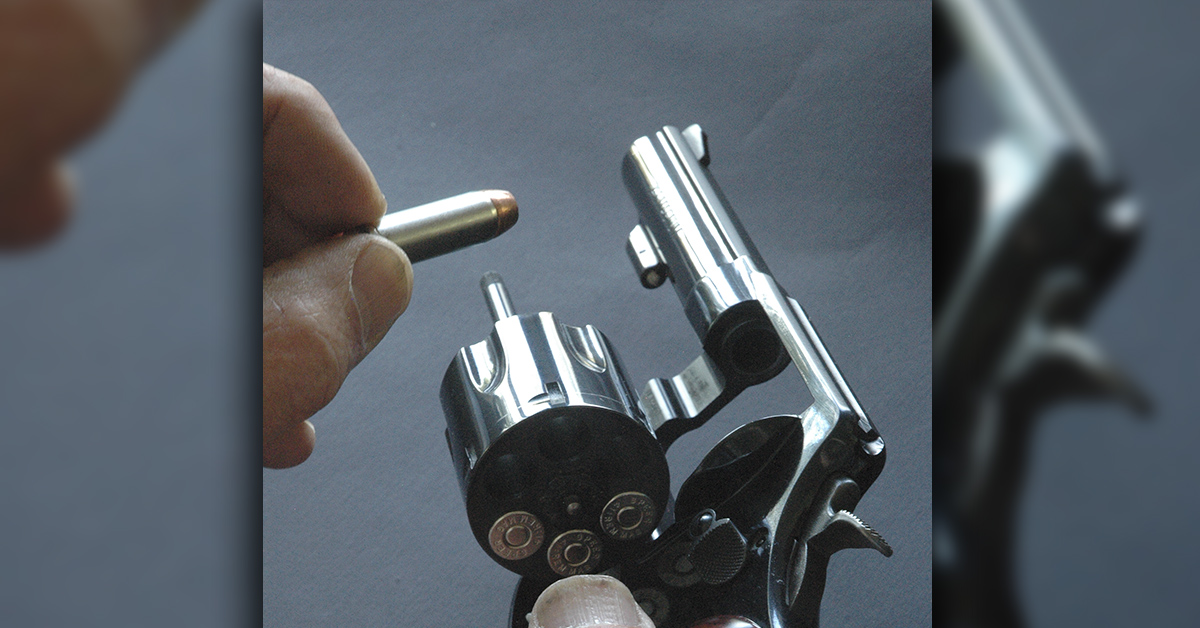
To court customers craving power and versatility, Colt had adopted the .44 W.C.F., or .44-40, in 1878, five years after it debuted in Winchester’s 1873 carbine. The advantages on the frontier of carrying one load for both handgun and rifle are obvious. Colt and Winchester prospered. The .44-40 didn’t match the .45 in power, but it was still a reliable man-stopper, and soon available anywhere.
In 1902, Smith & Wesson announced its .38 Special, more powerful than the .38 LC the Army had found unable to halt a determined enemy in the Philippines. To better handle stiff loads, S&W developed, in 1930, the .38/44 Heavy Duty DA revolver. It sired the .38/44 Outdoorsman. Urged on by Phil Sharpe, S&W and Winchester followed with a slightly longer cartridge than the .38 Special. Designated the .357 Magnum, it appeared in a Custom Shop N-Frame revolver in 1935. Its 158-grain bullets clocked 1,500 fps and carried nearly twice the energy of the .44-40! Boxed with a registration certificate and zeroed at 200 yards, it sold for $60. In 1938 the certificate went away as revolver ace Ed McGivern baptized the Model 27 by hitting man-size targets to 600 yards! S&W was flooded with orders that far surpassed projections.
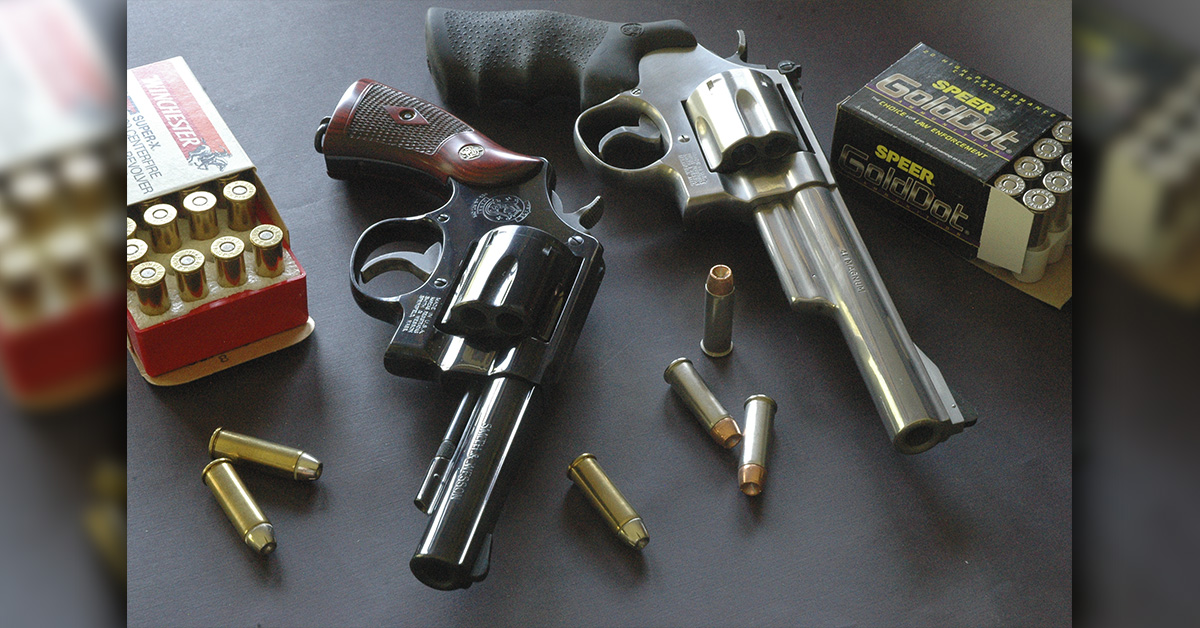
On the heels of WW II, Elmer Keith’s .44 Special handloads in his S&W 1950 Target cut a path for the .44 Magnum. Remington had factory loads in 1954. The 240-grain bullets at 1,350 fps doubled the blow of the .45 Colt. Model 29 .44 Magnum revolvers appeared in 1956.
In June 1963, Remington announced a new N-Frame cartridge for hunters and law officers. The .41 Magnum police load sent a 200-grain .410 bullet at 1,000 fps, for about 400 ft-lbs of energy. A 210-grain JHP at 1,300 delivers a whopping 790 ft-lbs, with recoil to match. The first Model 57 revolver came in blue or nickel finish, with target grips and adjustable sights. S&W listed barrel lengths of 4, 6, and 8-3/8 inches. A fixed-sight service version, the 58, followed in 1964. S&W dropped the Model 58 in 1977, 16 years before nixing the 57. A stainless 657 arrived in 1991. About 2,500 Classic Hunter revolvers with a 6 1/2-inch barrel and unfluted cylinder were built. In 1995, S&W listed a 657 with a 6-inch ported barrel and fluted cylinder — the Magnum Hunter. A 3-inch 657 (1998) and a 4-inch Trail Gun (2005) followed. S&W has since featured .41 Magnum revolvers in its Classics clan.
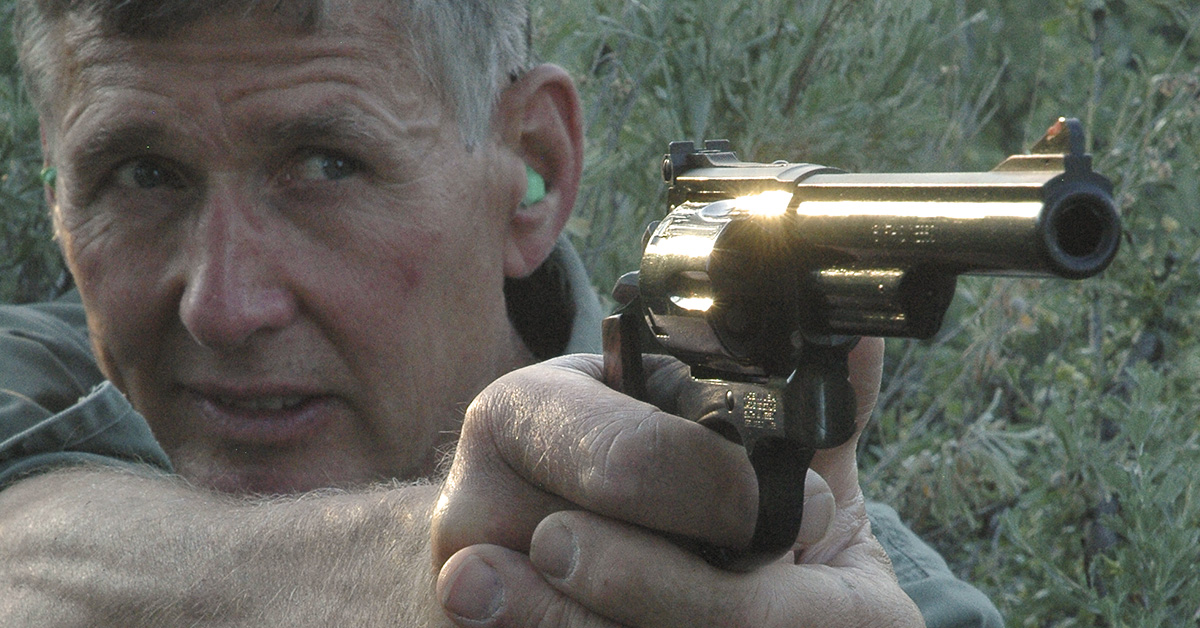
Perfect?
The .41 Magnum is a frothy cartridge. Felt recoil for the 200-grain service load in an N-Frame with an 8 3/8-inch barrel is about the same as for a 158-grain .357 bullet hurled at 1,430 fps. A 210-grain hunting load at 1,360 fps smacks you nearly twice as hard, with just 4 ft-lbs less actual recoil than a .44 Magnum’s 240-grain bullet at 1,470 fps.
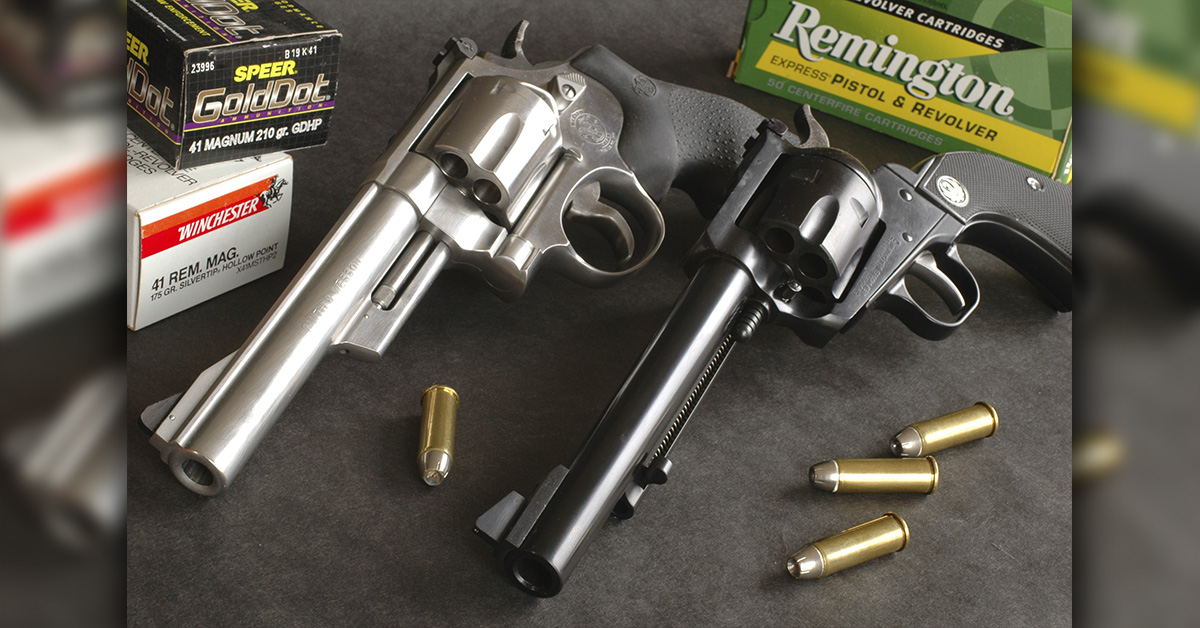
Downrange performance is equally impressive. Hornady has a 190-grain FTX load that screams from the muzzle at 1,500 fps and carries more than 500 ft-lbs to 100 yards! While the 8 3/8-inch barrel rewards you downrange, this cartridge wrings plenty of punch from a 4-inch. I ran velocity comparisons with a 4-inch Model 58 and a 6-inch 57. Five-shot groups, fired with iron sights over a Battenfeld bag at 25 yards, spanned 2.1 to 3.2 inches.
Velocity (fps) @ 12 ft: 4-in. S&W 58 / 6-in. S&W 57
- Winchester 175 Silvertip HP: 1212 / 1266
- Remington 210 Softpoint: 1226 / 1274
- Federal 210 JHP: 1256 / 1336
- Speer 210 Gold Dot JHP: 1226 / 1292
- Federal 250 CastCore: 1122 / 1176
At 1,160 fps, Federal’s 250-grain .41 CastCores (no longer listed) bring 650 ft-lbs past 50 yards — nearly half again as much as 180-grain .357 Magnum CastCores! Winchester 240-grain Platinum Tip .41s exit as fast as 250-grain Platinum Tip .44s, and reach 50 yards with 700 foot-pounds, close behind the .44.
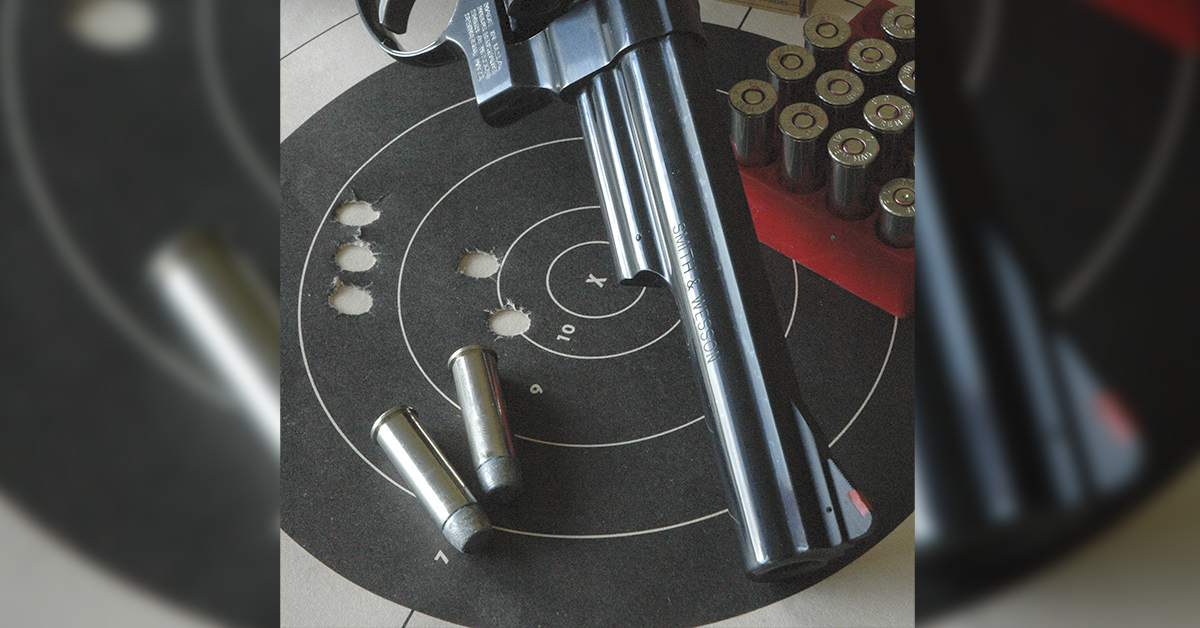
In published penetration trials, the .41 Magnum shines. Results here are in the number of 7/8-inch pine boards penetrated by factory loads from 6-inch-barreled guns at 15 feet:
- .41 Magnum, 210-grain softpoint: 12 ½
- .44 Magnum, 240-grain softpoint: 11 ½
- .357 Magnum, 158-grain lead: 10 ½
- .38 Special, 158-grain lead: 7
- .45 Auto, 230-grain FMJ: 6 (5-inch barrel)
I’m sweet on the .41 Magnum as a hunting round, and as last-ditch protection in bear country. It hurls more smash than needed for home defense or, arguably, law enforcement. A flinch is less likely to develop with 9mm pistols — one reason .41s are now scarce in service holsters. An N-Frame S&W is also relatively heavy and bulky. To the revolver faithful, though, this cartridge and the brawny, finely-crafted S&W 57 are a brilliant high-energy pair — one which could hardly have been imagined in 1877!
Zeroing for a Hunt
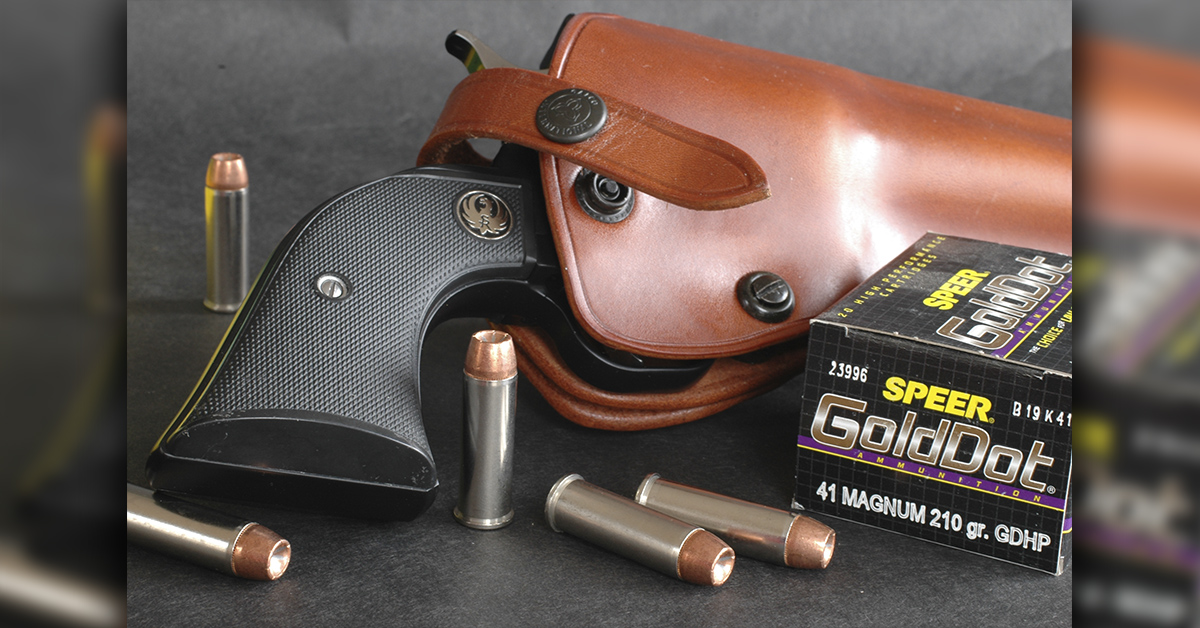
Zeroing a .41 Magnum revolver (or a .357 or a .44 Magnum) for a hunt, I adjust the sights at 25 yards. Drop at 75 yards for a high-velocity 210-grain load is about 2 ½ inches. An 80-yard point-blank range suits me. Handgun bullets trace steep arcs beyond 100 yards and lose energy fast. Distance matters. A 180-grain .30-06 bullet has more energy at 500 yards than stiff .41 Magnum loads bring to the muzzle! Up close, the .41’s thick bullet can be more lethal than charts indicate. But handgun hunting is properly a short-range effort.


